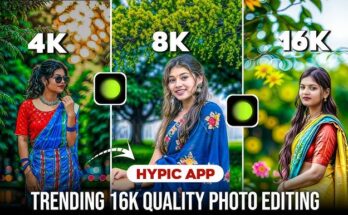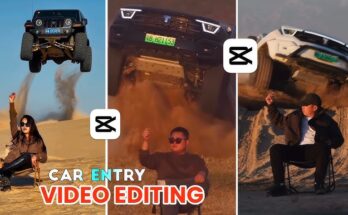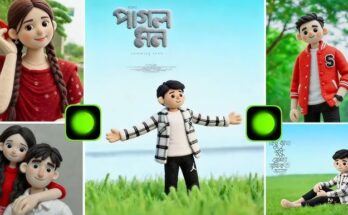In a world saturated with cute cat videos and quirky content, I wanted to try something that combined whimsy, novelty, and AI magic: an ice cream cat. The idea was simple: imagine a cute cat with ice cream elements (scoops, swirls, melting textures) and bring that to life via AI-generated video.
Why this idea? A few reasons:
-
People love cats.
-
Ice cream is visually rich and fun.
-
It’s an interesting test for the capabilities of modern AI video tools.
-
It offers a playful contrast: the organic (cat) with the artificial (ice cream, melting physics).
As AI video tools have matured, the gap between what we imagine and what can be generated is narrowing. I wanted to test that boundary. In this post, I’ll take you through exactly how I made my AI ice cream cat video, including what worked, what failed, and how you can try it yourself.
2. Concept & Ideation
2.1 Visualizing the Ice Cream Cat
Before jumping into tools, I sketched in my mind and on paper a few concept ideas:
-
A cat whose stripes are made of ice cream swirls
-
The head or tail shaped like a scoop
-
Drips of ice cream melting over fur
-
A scene: cat walking in a dessert land of ice cream hills
These visual ideas guided how I’d prompt the AI system. The more vivid and consistent my mental imagery, the better I could translate it into words.
2.2 Mood, Style, and Story
I also thought about:
-
Mood & tone: whimsical, dreamy, pastel, gentle
-
Style: semi-realistic cartoon, or stylized fantasy
-
Movement / narrative: maybe a cat walks, tilts its head, a scoop forms and melts
Having a loose narrative helps the video feel alive, rather than being a static loop.
2.3 Checking What Others Have Done
Before starting, I searched for “ice cream cat art” or “cat eating ice cream” to see reference imagery. That helped me refine the visuals I wanted. (For example, an AI-generated image of a cat eating ice cream exists in some image tools. Easy-Peasy.AI)
Also, I read about how others combine hybrid visuals: “hybrid ice cream cat scene” prompt examples exist in creative prompt collections. DocsBot AI
These references gave me confidence the idea was feasible but still fresh.
3. Choosing the Right AI Tools & Platforms
One of the most critical decisions is which AI video tool or platform to use. The capabilities, constraints, pricing, and ease of use vary widely.
Here’s how I evaluated and what I ended up using.
3.1 What to Look for in an AI Video Tool
When selecting a platform, I considered:
-
Text-to-video capability: The ability to generate video from a text prompt
-
Animation & motion support: Not just static frames
-
Audio / sound / voice support: ambient sounds, melt sounds, etc.
-
Control over style / consistency: customizing prompts, fine-tuning
-
Export capability & quality: resolution, format, watermark or not
-
Cost / free trial / limitations
3.2 Popular Tools & Their Strengths
Here are some tools I considered (and references):
-
Sora (OpenAI’s video model) — a leading text-to-video tool. Wikipedia+1
-
Veo (Google DeepMind) — Veo 3 supports both visuals and synchronized audio. Wikipedia
-
Canva’s AI video generator — swaps prompts into animations. Canva
-
VEED AI video generator — you can type a prompt, get visuals, voiceovers, editing. VEED.IO
-
InVideo AI — good for social media videos, prompt-based generation. Invideo+1
-
LTX Studio — more manual control over framing, camera, scene. Wikipedia
In practice, no tool is perfect. Some produce better visuals, others offer audio or control. I actually used a combination: one tool for generating visuals, another for motion/animation, a third for sound layering.
For my project, the core generation was done using Veo 3, supplemented by manual editing in an external editor. Why Veo 3? Because it supports synchronized audio and decent motion generation. Also, it’s among the more advanced recent models. Wikipedia
3.3 Limitations & Tradeoffs
-
Most tools restrict video length (e.g. 20 seconds for Sora by default). OpenAI Help Center
-
Style consistency across frames can break.
-
Audio may be generic or mismatched.
-
Watermarking or usage restrictions.
-
Cost for high resolution or longer video.
Knowing these, I planned for multiple short takes and stitched them later.
4. Crafting the Prompt: How to Get What You Imagine
Your prompt is probably the single most important factor. A vague prompt produces vague results; a precise, descriptive one gives you better control.
Here’s how I built my prompts and improved them through iteration.
4.2 Prompt Components & Tips
-
Subject & composition: “ice cream cat”, “melting drips”, “walking”
-
Style & mood: “pastel dream”, “fantasy”, “soft lighting”
-
Color / texture: “vanilla swirl, strawberry blend, glossy, melt edges”
-
Motion & camera: “camera pan”, “slow zoom”, “loop”, “walk”
-
Time / length: “10 second loop”, “24fps”
-
Audio cue: “gentle ambient chime, soft melting drip sound”
You may need to try prompt engineering: add or remove adjectives, try different verbs. Some platforms support “prompt weights” or “sub-prompts”.
4.3 Iterating Through Versions
I generated 3–5 versions, noted what I liked and what went wrong (weird distorting, broken drips, inconsistent cat anatomy). Then I blended best parts, re-prompted, repeated. Over time, the result improved.
5. Generating Frames & Animations
Once you have a prompt, it’s time to generate frames or video. Here’s how I approached it.
5.1 Frame-by-Frame vs Full Video Generation
Some tools generate full video sequences directly; others give you keyframes which you interpolate or animate manually.
I used Veo 3 to generate short video sequences (e.g. 5–10 second clips) directly. For some tricky parts (like melting drips), I generated keyframes and used an editor to animate transitions.
5.2 Adjusting for Continuity
One challenge is frame-to-frame consistency. The cat’s proportions or swirl patterns might shift.
To mitigate:
-
Use stronger prompt references (“the same cat”, “consistent style”)
-
Use “seed” or “style-locking” features if available
-
Blend or remix generated clips
-
Use morphing/interpolation in post-production
5.3 Compositing Multiple Clips
I generated a few clips:
-
Clip A: cat walking
-
Clip B: melting transition / drips forming
-
Clip C: close-up spin of the swirl
Then, I composited them in a video editor, aligned cuts and transitions so it looked cohesive.
6. Adding Motion, Transitions & Audio
A video without motion or sound feels flat. To breathe life into the ice cream cat, I layered motion effects and audio.
6.1 Motion & Transitions
-
Camera effects: slow zoom, slight pan
-
Crossfade / Dissolve between clips
-
Morph / warp transitions (drip forms)
-
Easing (soft in/out)
I used a standard video editor (Adobe Premiere, DaVinci Resolve, or similar) to fine-tune transitions and motion smoothing.
6.2 Audio & Sound Design
I wanted ambient sounds:
-
Gentle background melody (dreamy, pastel vibe)
-
Occasional drip / melt sound effects
-
Soft “purr” or meow (optional, low volume)
I sourced royalty-free ambient tracks and melt/drip SFX from sound libraries. Then I layered them to match visual timing (e.g. drip when drip appears).
Optionally, some AI video tools let you generate ambient audio or sound design directly (e.g. Veo 3’s synchronized audio). Wikipedia
6.3 Sync & Polish
After layering, I watched frame-by-frame to ensure key visual events (drip, swirl shift) lined up with sounds. I trimmed gaps, fading audio in/out, adjusted volumes.
7. Polishing, Editing & Post-Processing
Now comes the fine-tuning: making the video feel seamless.
7.1 Color Grading & Effects
-
Apply a pastel color grade
-
Use glow / bloom to soften edges
-
Add a vignette or dust / particles overlay
-
Mild motion blur on transitions
These help unify disparate generated clips.
7.2 Masking & Layer Blending
For parts where AI generation had flaws (e.g. odd jagged edges), I masked them, blended overlay textures, or painted corrections manually (in After Effects or compositing tool).
7.3 Looping & Seamlessness
If making a looping video, I aligned the first and last frames so transition is smooth. Sometimes I overlapped frames, crossfades, or mirrored motion.
7.4 Resolution, Frame Rate & Export Settings
-
Export at desired resolution (1080p or 4K, depending on tool limits)
-
Choose appropriate frame rate (24, 30 fps)
-
Use high-quality codec (ProRes, H.264, etc.)
-
Remove unwanted watermarks or identify usage limitations
8. Exporting, Sharing & Promoting
Once finished, it’s time to share your creation and get eyeballs on it.
8.1 Export Options
I exported multiple versions:
-
Social media (1080 × 1080 square, or vertical 9:16)
-
Web / YouTube (1920 × 1080)
-
GIF / loop version
8.2 Hosting & Embedding
-
Upload to YouTube, TikTok, Instagram, or your blog
-
Embed video in your post
-
Provide a short behind-the-scenes (BTS) version
8.3 Metadata & SEO
-
Title: “AI Ice Cream Cat – Dreamy Animation”
-
Description: Brief making-of, tools used, key prompt
-
Tags: “AI video”, “cat video”, “ice cream cat”, “AI animation”
-
Thumbnail: cute still frame, pastel tones
8.4 Promotion & Community Sharing
-
Share on Twitter / X, Instagram, Reddit (AI / art communities)
-
Post the prompt + making process
-
Tag relevant AI tool accounts
-
Ask for remixes / challenge others
Often, the story of how you made it is as interesting as the result.
9. Lessons Learned & Tips for You
Here are what I learned (so you don’t have to repeat my mistakes) and tips to improve your own process.
9.1 What Went Well
-
The concept captured attention — people shared it just from the thumbnail
-
Prompt iteration improved quality dramatically
-
Compositing clips allowed combining best bits
-
Sound layering gave it emotional depth
9.2 What Was Hard / What Failed
-
Inconsistent details: swirl shapes, cat limbs
-
Transition glitches (melting didn’t always align)
-
Audio sometimes generic or mismatched
-
Tool limits on resolution or video length
-
Watermarks or usage restrictions
9.3 Tips for Better Results
-
Start small: 5–10 sec clips, then build
-
Prompt discipline: be explicit about consistency
-
Use seeds / style-locking if tool supports
-
Blend generated clips, don’t rely on one take
-
Mask & touch up in editing
-
Time your audio cues to visuals
-
Test loop transitions early
-
Document your prompts & versions — so you can refine
-
Respect usage guidelines / copyright from AI tools
-
Have fun, experiment — weird ideas often shine
Prompt:
Ultra-realistic cinematic video in 4K of a modern ice cream machine in a bright dessert shop. A person pulls down the lever and creamy vanilla ice cream begins swirling into a waffle cone. As the ice cream flows out, a tiny fluffy kitten with soft fur and sparkling eyes also gently emerges from the machine along with the ice cream, as if it is part of the swirl. The kitten smoothly lands sitting right on top of the ice cream cone, perfectly balanced, looking playful and blinking cutely. Every motion is seamless and hyper-real, with natural shadows, textures, and lighting making it look like a real-life recording. The background shows a cozy pastel-colored ice cream shop with glowing lights. Camera captures close-up slow motion details of the ice cream swirl mixing with the kitten’s fur, creating a magical but fully realistic scene designed to look like it is happening in real life.
10. Future Possibilities & Next Steps
Once you’ve done one AI creation, many doors open.
-
Longer narratives: tell a short story with the ice cream cat
-
Interactive / AR versions: let users rotate or manipulate
-
Combine with real footage: composite real cat + AI ice cream overlay
-
Collaborate with musicians / voice actors
-
Turn it into NFTs, stickers, merchandise
-
Explore new tools (next-gen models, local inference)
AI video is evolving fast; new models with longer coherence and better audio are emerging. For example, Veo 3 is pushing towards better synchronized audio.
Also, open-source models are progressing, offering more control locally.
11. Conclusion
Making an AI ice cream cat video was a creative experiment, a technical challenge, and a journey. It pushed me to think carefully about visualization, prompt design, motion, audio, and post-production. The final result isn’t perfect, but it captures the whimsy and fun I imagined.
If you’re inspired, I encourage you to try your own version. Use this post as a map, adapt as needed, and share what you make. Who knows — your creation might go viral or inspire someone else.
If you’d like, I can help you generate a prompt, suggest exact tool settings, or walk you through the process in your preferred tool. Want me to help with that next?
For More Information VIsit



